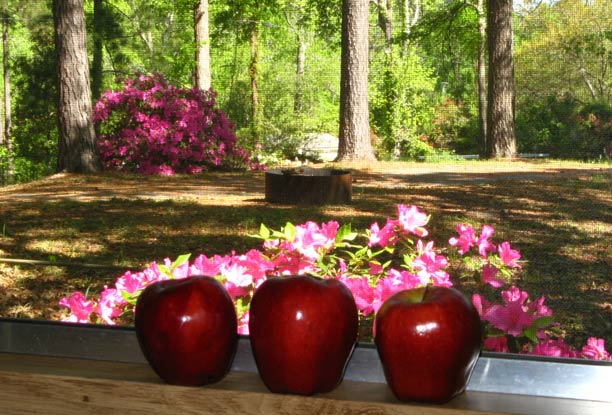April 3-10, 2010
To go Back at any time,
use Browser’s “Previous Page”
On interstate highways, it is easy to drive from San Antonio to Galveston in one day. However, to avoid the Easter beach crowd, we chose to take back roads and delay our arrival in Galveston. Our travels sometimes went “this way” and sometimes “that way” until reaching Lake Jackson. There, we learned, either way would have taken us to the same point:

Having lived in southern California so long, two things really surprised us the next day as we drove onto Galveston Island and into the city from the southwest. One was the widespread availability of free beach access, not just for people but for their vehicles. Apparently, the sand is highly compacted and there is little danger of getting stuck. The other was the abundance of parking along miles and miles of seawall (with the beach just below) that was absolutely free. Those two aspects of Galveston life certainly must add to its attraction.
On our arrival in Galveston on Easter Sunday afternoon, the city was still crammed with people. Part of the crowd was due to the day’s arrival and departure of Royal Caribbean’s “Voyager of the Seas.” Many visitors came to spend the day --- or, perhaps, the whole weekend --- at the beach. It was a very foggy day, though, offering little incentive for scenery shots with a compact camera.
On Monday, as Galveston regained a semblance of normalcy, we were able to drive more easily through the city. The striking contrast between attractive hotels and restaurants along the gulf coast and more humble dwellings inland was impossible to miss. It was also immediately obvious that a number of structures remain only partially repaired from Hurricane Ike, which slammed into Galveston in September 2008. Flood water from Ike’s surge reached 8.5 feet above ground in downtown! A few buildings have been abandoned but still stand.
Unlike the day before, parking was no problem. Leaving the car behind, we walked to the 21st Pier Theater to see the film “The Great Storm,” a documentary on the Hurricane of 1900 that nearly obliterated the city. It is a wonder Galveston exists today! The waterfront drew us next and reassured us that --- after all the storms and all the cruise ships --- life was, indeed, back to normal:


The Grand Opera House was another stop for us. Built in 1894, it survived not only the Hurricane of 1900 but another hurricane 15 years later, nearly as strong, as well as Hurricane Ike just 19 months ago. It survived thanks to donors who would not let it die:

The Grand Opera is still functional as a venue for big name entertainment and musicals although no performances were scheduled during our visit.
A number of buildings in the downtown area have been renovated since Ike but, noticeably, not their ground floors. These floors would have been almost totally submerged when Ike came ashore. Two examples of such refurbished buildings are shown below:
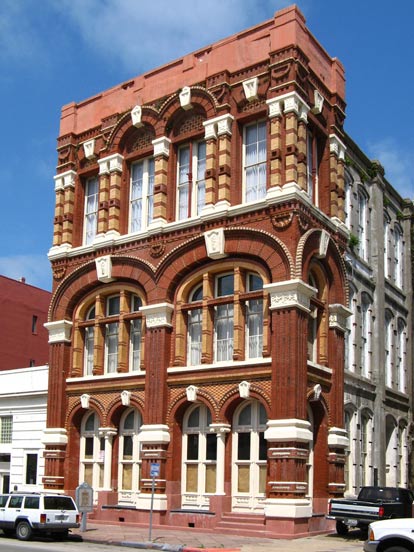
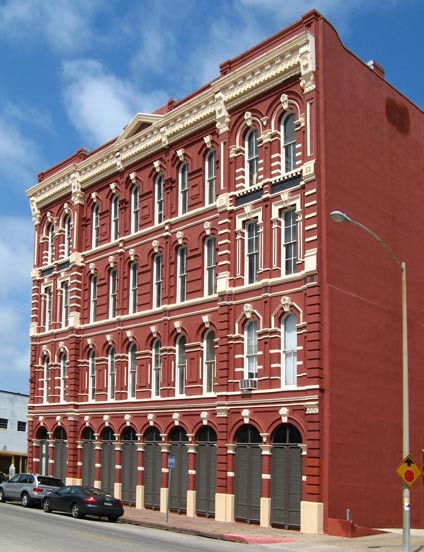
Another eye-catching building is the so-called “Bishop’s Palace:”
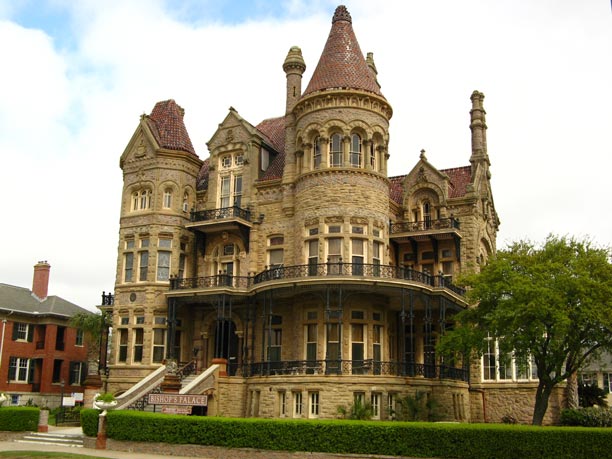
Designed for a local attorney in 1887, it took 7 years to build. Its current name stems from its purchase in 1923 by the Catholic Diocese as the seat of the local bishop.
The bishop’s church is directly across the street. Although looking like something out of Morroco, it was designed by the same architect as the Gothic “Bishop’s Palace.” This church, which features an unusual onion dome (partially hidden), replaced the original church, destroyed by the Hurricane of 1900.
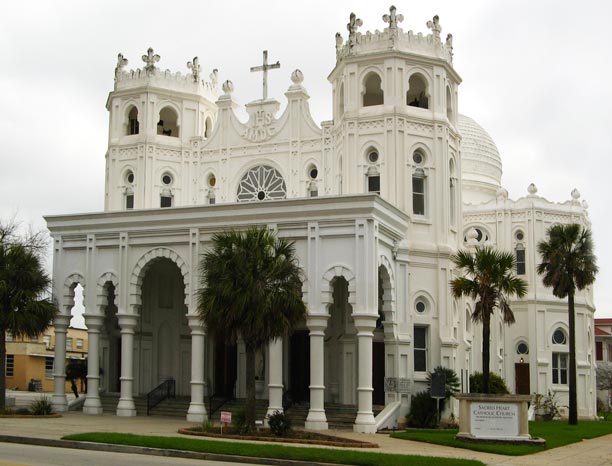
Afterwards, we paused to inspect several of the more substantial homes in Galveston. Most of them seemed in need of some tender, loving care --- spelled “m-o-n-e-y.” Here’s the better side of one such mansion:
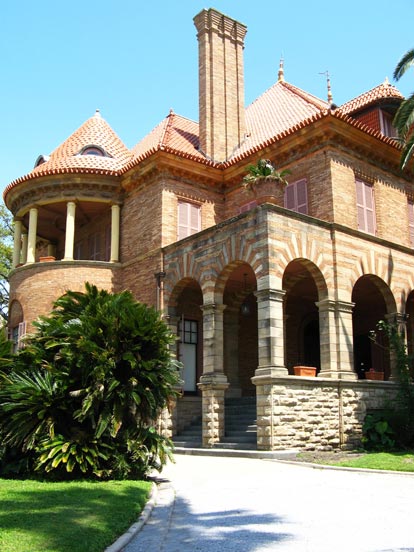
It has to be discouraging to any Galveston resident to have had so many destructive hurricanes come ashore over this city in modern times.
In the afternoon, the fog and haze lifted enough to shoot some decent beachside photos. This shot looks along the seawall, which was built in the years just after 1900. We believe the large slabs of rock on the beach were installed to prevent ocean surge from undermining the wall.
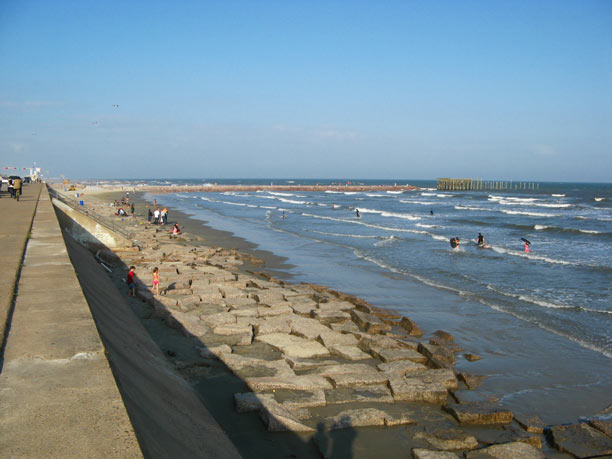
Interestingly enough, this seaward side of Galveston Island was raised in elevation after the seawall was built by pumping sand behind it and placing new structures on top. However, the elevation was not changed on the landward side of the island where the downtown area is located. That is why so much flooding occurred in downtown when Hurricane Ike arrived in 2008.
Here’s a view towards shore from a jetty:
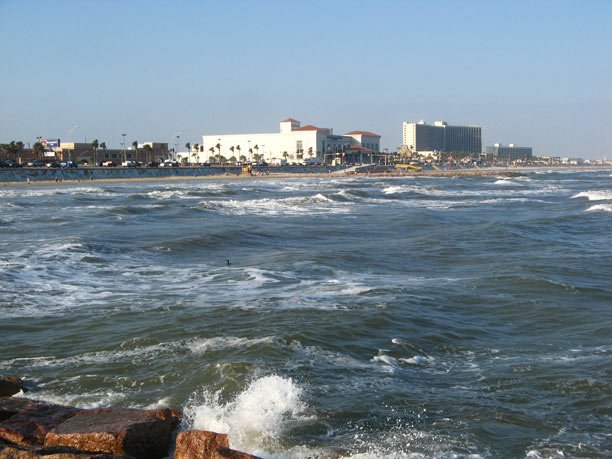
The seawall is easy to spot.
On an overcast and sleepy Tuesday morning, we left Galveston by way of the free ferry to Port Bolivar. It was a short but invigorating trip that provided this receding view of Port Galveston:
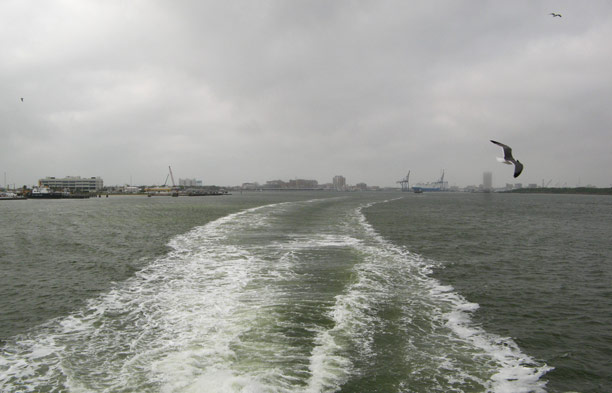
A ferry bound for Galveston afforded us a mirror image of our own vessel headed the other way:

The whole ferry operation was quick and efficient and before we knew it, we were trundling eastward along the Bolivar peninsula. Like Galveston, this low lying piece of Texas was clobbered by Hurricane Ike, which swept away whole neighborhoods along the shore.
A few hours of driving brought us to Toledo Bend Reservoir on the Sabine River between Texas and Louisiana. The reservoir is a very large body of water --- the largest man-made lake in Texas (or partially therein). Boaters, fishermen and seekers of peace and quiet find this a worthy destination. Below are several typical waterside scenes near the area we resided, about 5 miles from the dam:
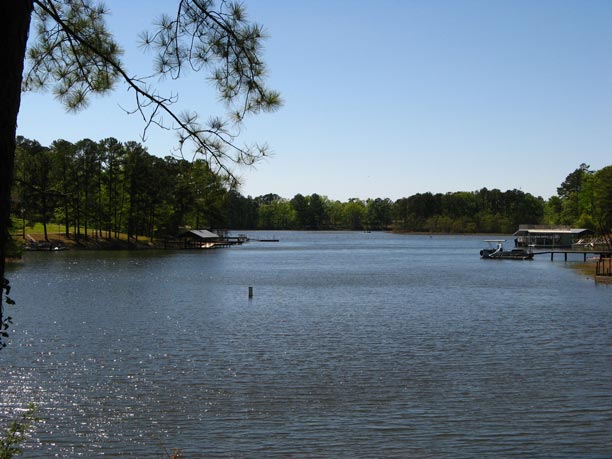
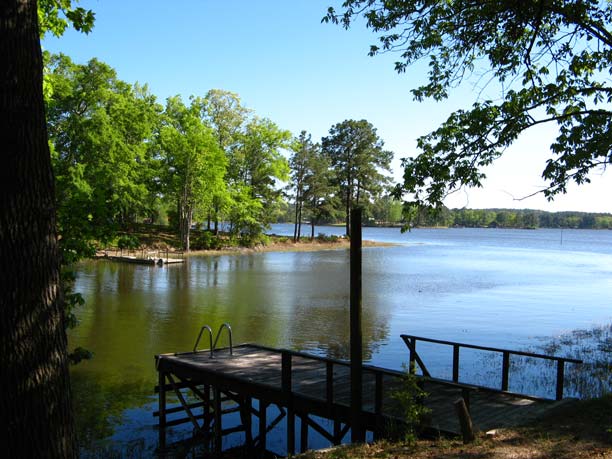
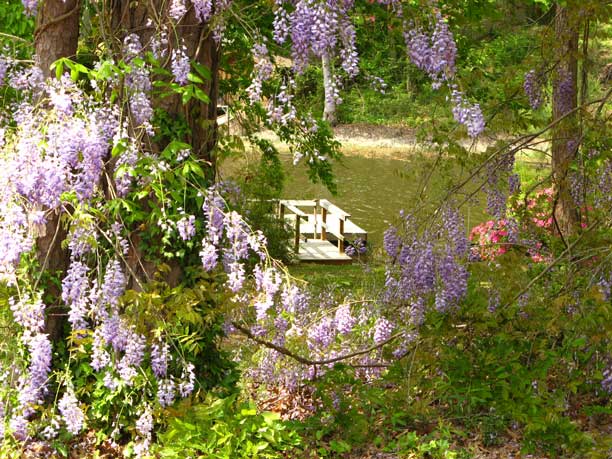
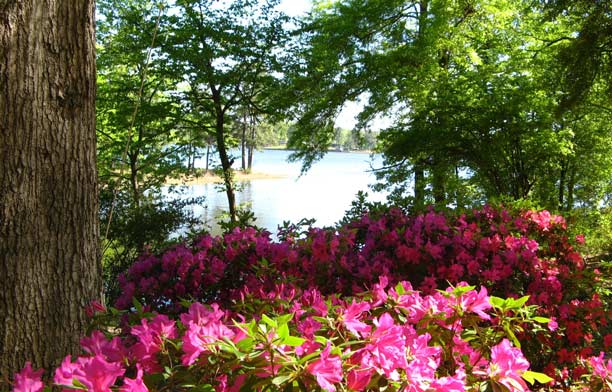
Patty’s uncle and aunt live part of the year in a mobile home not far from the water’s edge, shaded abundantly by pines and liquid amber maples. During our stay with them, azaleas were in full bloom and wild, high-climbing wisteria was common. At this time of year it is a very peaceful place --- at least, on the weekdays (we’re not sure about the weekends). Of course, there’s not much to do if you’re not into boating or fishing other than enjoying the serenity. The nearest town of any size is 35 miles away. We managed to get in much visiting and a little biking. We learned quickly, though, to keep moving while biking or the insects catch up.
Aunt Mary is now a frail 92 and still head chef, but Uncle Bill concocts delectable pancakes with his secret ingredients:
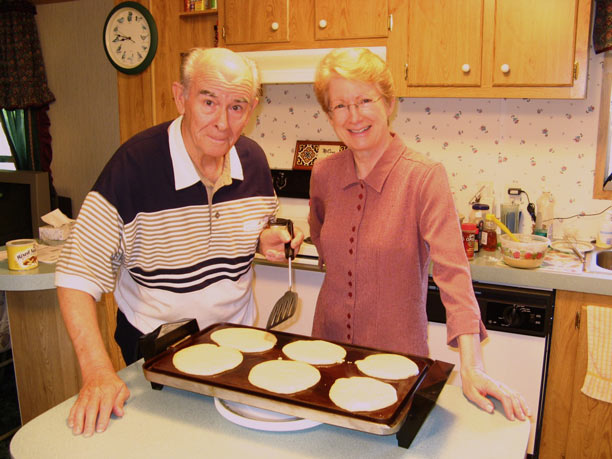
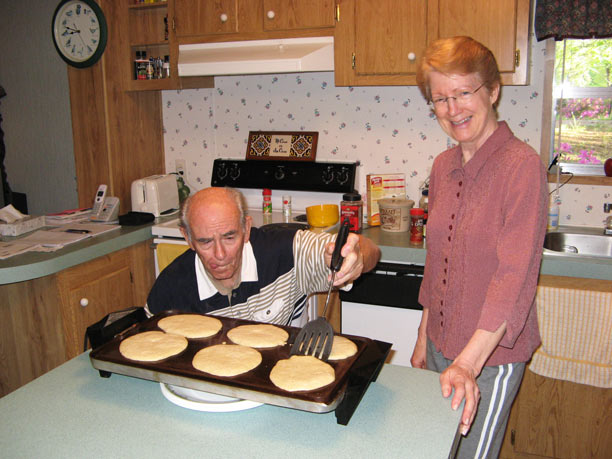
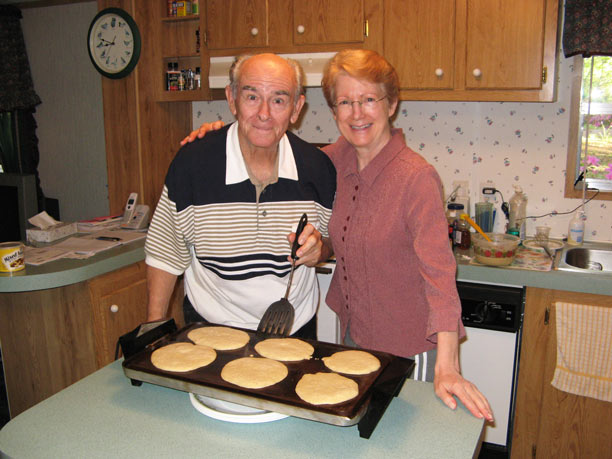
A more good-hearted, patient and jovial fellow than Uncle Bill would be hard to find.
This episode concludes with a view out the kitchen window, a scene we became accustomed to each day --- that is, until we ate the apples:
